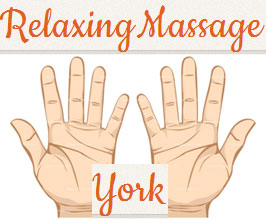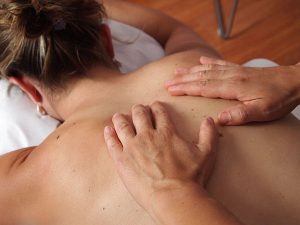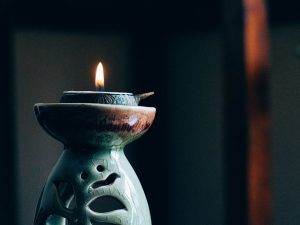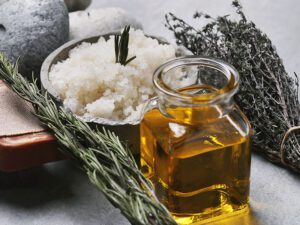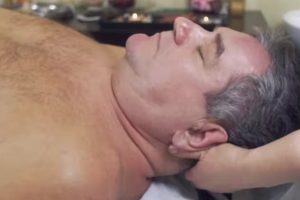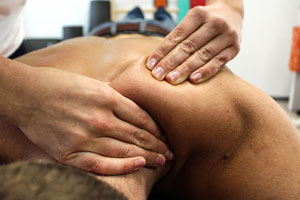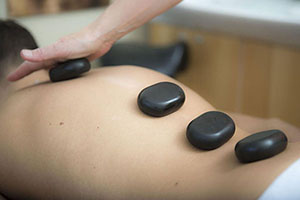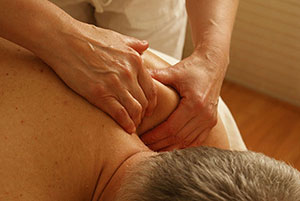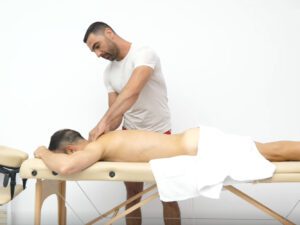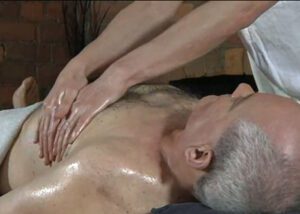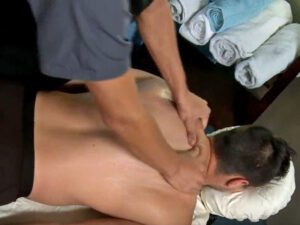What Deep Tissue Massage (DTM) is Explained – Definition, Benefits, Strokes and Tools
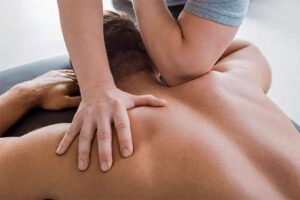 Deep tissue massage is different to Swedish style treatments. It has all the benefits of Swedish massage and some added ones too. Deep tissue massage, also known in the industry as D.T.M., uses different types of strokes, slowly applying high pressure to underlying, deeper tissues. The parts of the body used by the masseur to provide a deeper massage are the same as with Swedish with some additions.
Deep tissue massage is different to Swedish style treatments. It has all the benefits of Swedish massage and some added ones too. Deep tissue massage, also known in the industry as D.T.M., uses different types of strokes, slowly applying high pressure to underlying, deeper tissues. The parts of the body used by the masseur to provide a deeper massage are the same as with Swedish with some additions.
What is Deep Tissue Massage?
The name of the style, Deep Tissue Massage (DTM), is exactly what it says it is. It uses high-pressure strokes to reach deeper body tissues (muscles that lie under other muscles for example). It can also involve using sustained pressure to reach these deeper layers. Riggs A. (2007) says a common misconception about deep tissue work is, it has to be painful for you to benefit from it. This is not so. You can go deep without discomfort if you are in constant contact with your client. For added benefits DTM also involves the lengthening and shortening muscles before work is done on them. It aims to positively change the structure of tissues. This results in more movement in what were restricted muscles or joints you may have.
What Benefits Does DTM have?
- Deep massage will give you all the benefits of a therapeutic Swedish massage and more.
- Also respected massage therapist and author Riggs A. (2007) tells us of increased relaxation and longer lasting benefits.
- Romanowski at al (2012) from Poznan University of Medical Sciences says DTM was significant better therapy than Swedish massage.
- Deep Tissue therapy works well for pain management. This is reported by Law L. Dr et al (2008) in the study does at Graduate Program in Physical Therapy and Rehabilitation Science, The University of Iowa. Also proven by Majchrzycki M. (2013) study of 59 patients with lower back pains at Department of Nursing, Poznan University of Medical Sciences.
- Lowers blood pressure and hearth rate. KAYE A. M.D. Ph.D. D.A.B.P.M. et al (2008) proves this in the study of 263 people with muscles spasms and or pain.
What is Different About DTM?
Lets use Swedish (therapeutic) massage strokes as a comparison. Generally in Swedish massage strokes are made in the direction of venous blood flow. This is so that no damage is done to the veins, which have valves in allowing blood to flow only toward the heart.
With deep tissue massage this is not always the case. So, to prevent damage when working in the other direction (away from the heart, opposite to venous blood flow) slow strokes and oblique pressure are used, with deep pressure.
Strokes Used in DTM
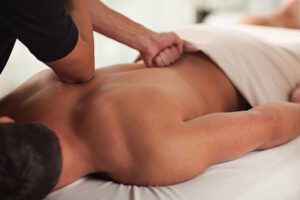 The first thing that must happen is tissues being worked on must be warm. So effleurage is used to do this. You must introduce the deeper pressure slowly, allowing pressure to build. If you go with high pressure from the start, this will disturb your client and cause them pain. You need to be in constant contact with the client to find their personal boundaries. The aim is to help your client not to harm them.
The first thing that must happen is tissues being worked on must be warm. So effleurage is used to do this. You must introduce the deeper pressure slowly, allowing pressure to build. If you go with high pressure from the start, this will disturb your client and cause them pain. You need to be in constant contact with the client to find their personal boundaries. The aim is to help your client not to harm them.
Romanowski et al (2012) tells us strokes in DTM use oblique pressure (diagonal stokes not straight onto bones but at an angle to them), lengthening stokes (in the direction the muscles lengthen) and cross-fibre (perpendicular to the direction of muscle fibres, across the muscle) strokes. When you feel a small areas of tension in a muscle (called a trigger point) you apply high-pressure to it. Then use strokes away from that tight spot in muscle.
- Oblique strokes ensure that pressure applied still allows blood to flow through veins.
- Lengthening strokes are used to stretch muscles in the correct direction of movement.
- Cross-fibre strokes release muscles that are close together to make them move passed each other more smoothly.
- Finding and applying high-pressure to a trigger point will release that tight point in a tight muscle.
- Once released further work away from it will maintain the relaease for a longer period.
Tools Used in DTM
Not only are the strokes used different but, the tools used to provide a deeper massage are also different. In Swedish massage generally the fingers, thumbs and palms of the hands are used. These are great for the purpose of releasing tension in superficial tissues just under the skin. With deep tissue these tools are used alongside others too. To give more pressure to strokes the knuckles, fist, forearms and elbows are also used.
References:
Riggs R. CMT (2007) Deep Tissue Massage: A Visual Guide To Techniques, Berkeley Califonia, North Atlantic Books
Law L. Dr et al (2008) Massage Reduces Pain Perception and Hyperalgesia in Experimental Muscle Pain: A Randomized, Controlled Trial [Online] Available at https://www.sciencedirect.com/science/article/pii/S1526590008004987#! (Accessed 23 July 2018)
KAYE A. M.D. Ph.D. D.A.B.P.M. et al (2008) The Effect of Deep-Tissue Massage Therapy on Blood Pressure and Heart Rate [Online] Available at https://pdfs.semanticscholar.org/f5ae/87c7e308cf12de81e0593638cbdcf10acdac.pdf (Accessed 23 July 2018)
Majchrzycki M. et al (2013) Deep Tissue Massage and Nonsteroidal Anti-Inflammatory Drugs for Low Back Pain: A Prospective Randomized Trial [Online] Available at https://www.hindawi.com/journals/tswj/2014/287597/#B23 (Accessed 23 July 2018)
Romanowski M. at al (2012) A comparison of the effects of deep tissue massage and therapeutic massage on chronic low back pain [Online] Available at https://www.researchgate.net/publication/228088433_A_comparison_of_the_effects_of_deep_tissue_massage_and_therapeutic_massage_on_chronic_low_back_pain (Accessed 16 July 2018)
